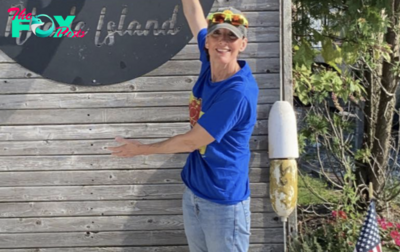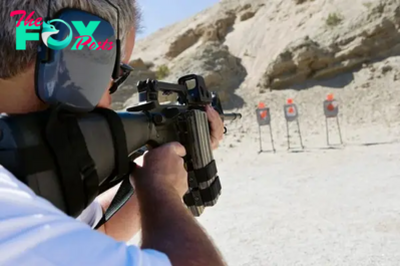Health
How leaders can become better coaches – Mary T. O’Sullivan
By Mary T. O’Sullivan, MSOL
“In the past a leader was a boss. Today’s leaders must be partners with their people; they no longer can lead solely based on positional power.” – Ken Blanchard
Recently, I participated in an interview where the questions were presented in written form, and the answers were also expected to be written. Since the interview touches on many elements of leadership, the questions and answers are useful in helping leaders become more effective by coaching their employees for motivation and engagement. The following Q&A is a sampling of the types of questions asked and answered.
We’re leading and coaching in increasingly diverse organizations. And one aspect of workforce diversity on the rise is generational diversity. What advice would you offer about how to effectively coach a multi-generational workforce? And how do you activate the collective potential of a multi-generational workforce?
There are numerous studies on the multigenerational workforce and the differences that can lead to hard feelings and lack of respect. According to the Harvard Business Review, “learning how to collaborate with and appreciate the unique preferences, habits, and behaviors of colleagues who grew up in different times…” is the key to harmony among the generations in the workforce. In coaching a great span of generations on a team, one challenge would to be establishing how we communicate with each other.
Older generations prefer phone calls, while younger generations are going to text their messages rather than call. One solution would be to pair up members of the generations and teach each other the technology that they each prefer. In a recent report by CBS news, once the older generation learned the mysteries of the iPhone from their younger cohorts, they were delighted to text. The potential of the multigenerational workforce is in the value each brings to the table. Older workers should be paired with younger workers for mentoring and advising, while the tech savvy youngsters can demonstrate the benefits of learning details of new technology.
Encouraging communication brings the generations together, which can add up to 5 or more generations in the same workplace. As a coach, I would encourage leaders to arrange casual social events to break down barriers and bring people together.
How do you coach someone to do their best work? How can leaders coach for peak performance in our current context? What are your “Top 5 Ways That Leaders and Managers Can Be Effective Coaches?” (Please share a story or example for each.)
People possess the innate ability to do their best work; they only need to recognize that they are capable. A good coach helps people realize their best qualities by asking probing questions, such as “What would it be like for you if…?” When people are put into a state of realization or visualization of their futures, they can imagine themselves being at their peak performance. The same is true in sports psychology. My son was a great wide receiver in high school. He hardly ever missed a catch. When I asked him how he could be so accurate every time, he told me he visualized it every night before bed. He put himself in that place of success and imagined catching the football perfectly right into his hands without effort. Appealing to visualization and imagination works to help people in their quest to improve whatever it is their goals are.
Wise leaders always look to the future. When leaders are looking for peak performance from employees, coaching toward the future employees that envision for themselves appeals to their core beliefs. With recent changes in the workplace, remote work, hybrid work, or no office work, it’s even more important to engage people on their personal visions and for their place in the organization. Without personal involvement from leaders, in our current unique work context, people will stray. People need to understand that they are important and crucial to the business’s success, and they need to grasp why business success equals personal success.
Top 5 Ways Leaders and Managers Can Be Effective Coaches:
Managers and leaders need to change their focus from “problem thinking” to “advocacy thinking.” Focus on Helping People Turn Their Thinking Around – It’s a mindset thing.
- Instead of asking, “What is the biggest problem here?” – ask – “What are you doing when things are working well?” Eliminate the defensiveness of the question. Focus on the positive.
- If you’re tempted to ask, “Which obstacle causes the most trouble?”, ask, “What’s the smallest change that could make the biggest impact?” Don’t try to get people to tackle huge problems all at once, ask for small changes that can lead to a bigger achievement.
- It’s not a good idea to ask, “How do we fix this?” Instead, ask “What possibilities exist that we have not yet considered?” Again, take the emphasis off the employees, personally, and ask what they think about what options are open that you may not even know about.
- If you’re used to asking, “Which issue surfaces the most often and why does it keep happening?”, ask, “Tell me a story of when you were at your very best, when you performed really well.” Adding the element of “story” into the conversation stimulates people to want to talk. You want to hear what they think they are doing or have done well and capitalize on it.
- Always ask employees, “What goals would you like to set that will help you realize your vision or picture of success?” Focusing on goals for success brings people into a success mindset. They will think of how to be successful for themselves and for their organizations.
The interview will be published in a few weeks, and there are several other probing questions for the betterment of leadership. Through learning how to coach employees instead of commanding them, leaders can improve employee engagement, productivity, and motivation, and therefore, the bottom line.
“Each person holds so much power within themselves that needs to be let out. Sometimes they just need a little nudge, a little direction, a little support, a little coaching, and the greatest things can happen.” – Pete Carroll
Connect with Mary:
www.encoreexecutivecoaching.com
https://www.linkedin.com/in/marytosullivan/
401-742-1965
Read all Mary’s columns here: https://rinewstoday.com/mary-t-osullivan-msol-pcc-shrm-scp/

Mary T. O’Sullivan, Master of Science, Organizational Leadership, International Coaching Federation Professional Certified Coach, Society of Human Resource Management, “Senior Certified Professional. Graduate Certificate in Executive and Professional Career Coaching, University of Texas at Dallas. Member, Beta Gamma Sigma, the International Honor Society. Advanced Studies in Education from Montclair University, SUNY Oswego and Syracuse University. Mary is also a certified Six Sigma Specialist, Contract Specialist, IPT Leader and holds a Certificate in Essentials of Human Resource Management from SHRM.
-

 Health3h ago
Health3h agoHow Pulmonary Rehab Can Help Improve Asthma Symptoms
-

 Health3h ago
Health3h ago10 Things to Say When Someone Asks Why You’re Still Single
-

 Health1d ago
Health1d agoThe Surprising Benefits of Talking Out Loud to Yourself
-

 Health1d ago
Health1d agoDoctor’s bills often come with sticker shock for patients − but health insurance could be reinvented to provide costs upfront
-

 Health1d ago
Health1d agoHow Colorado is trying to make the High Line Canal a place for everyone — not just the wealthy
-

 Health1d ago
Health1d agoWhat an HPV Diagnosis Really Means
-

 Health2d ago
Health2d agoThere’s an E. Coli Outbreak in Organic Carrots
-

 Health3d ago
Health3d agoCOVID-19’s Surprising Effect on Cancer



























